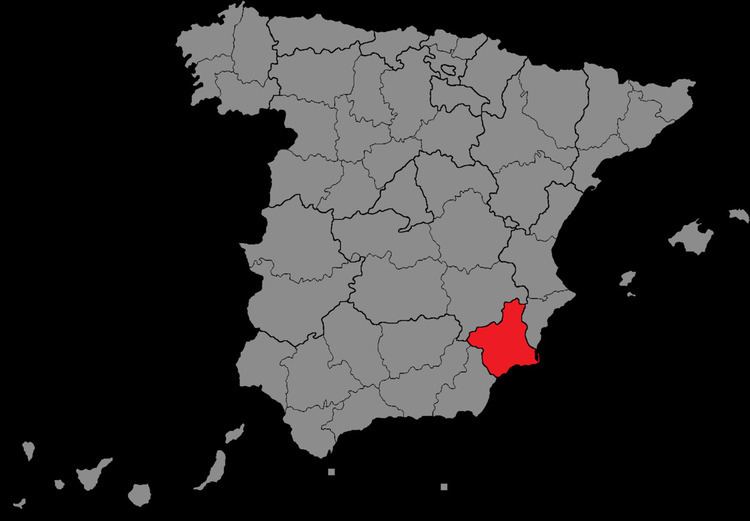Province Province of Murcia Population 1,467,288 (2016) Founded 1977 | Autonomous community Region of Murcia Electorate 1,034,075 (2016) Region Region of Murcia | |
 | ||
Seats 8 (1977–1986)
9 (1989–2004)
10 (2008–) Created Spanish general election, 1977 Major settlements Murcia, Cartagena, Spain, Lorca, Spain, Molina de Segura | ||
Murcia is one of the 52 electoral districts (Spanish: circunscripciones) used for the Congress of Deputies—the lower chamber of the Spanish Parliament, the Cortes Generales. The electoral system uses the D'Hondt method and a closed-list proportional representation, with a minimum threshold of 3%.
Contents
Murcia, with over 400,000 inhabitants, and Cartagena, with over 200,000, are the largest towns and together account for almost half of the district's electorate and population. Lorca are the only other municipalities with more than 50,000 inhabitants. The district has produced some of the strongest historical performances for the People's Party in the 2008 and 2011 elections, and for any party in a Spanish electoral district.
Boundaries and electoral system
Under Article 68 of the Spanish constitution the boundaries must be the same as the autonomous community of Murcia and under Article 140 this can only be altered with the approval of congress. Voting is on the basis of universal suffrage in a secret ballot. The electoral system used is closed list proportional representation with seats allocated using the D'Hondt method. Only lists which poll 3% or more of all valid votes cast, including votes "en blanco" i.e. for "none of the above" can be considered for seats. Under article 12 of the constitution, the minimum voting age is 18.
At the time of the 2008 election, Murcia was the largest municipality with 296,000 voters out of the district's total electorate of 950,000. This was followed by Cartagena with 146,000, Lorca (57,000), Alacantarilla (28,000), Yecla (23,000) and Águilas (22,000.)
Eligibility
Article 67.3 of the Spanish Constitution prohibits dual membership of the Cortes and regional assemblies, meaning that candidates must resign from Regional Assemblies if elected. Article 70 also makes active judges, magistrates, public defenders, serving military personnel, active police officers and members of constitutional and electoral tribunals ineligible.
Number of members
From the 1977 General Election onwards Murcia returned eight members. It gained a ninth seat for the 1989 General Election and has elected ten members since the 2008 election.
Under Spanish electoral law, all provinces are entitled to a minimum of 2 seats with a remaining 248 seats apportioned according to population. These laws are laid out in detail in the 1985 electoral law. (Ley Orgánica del Régimen Electoral General) The practical effect of this law has been to overrepresent smaller provinces at the expense of larger provinces.
